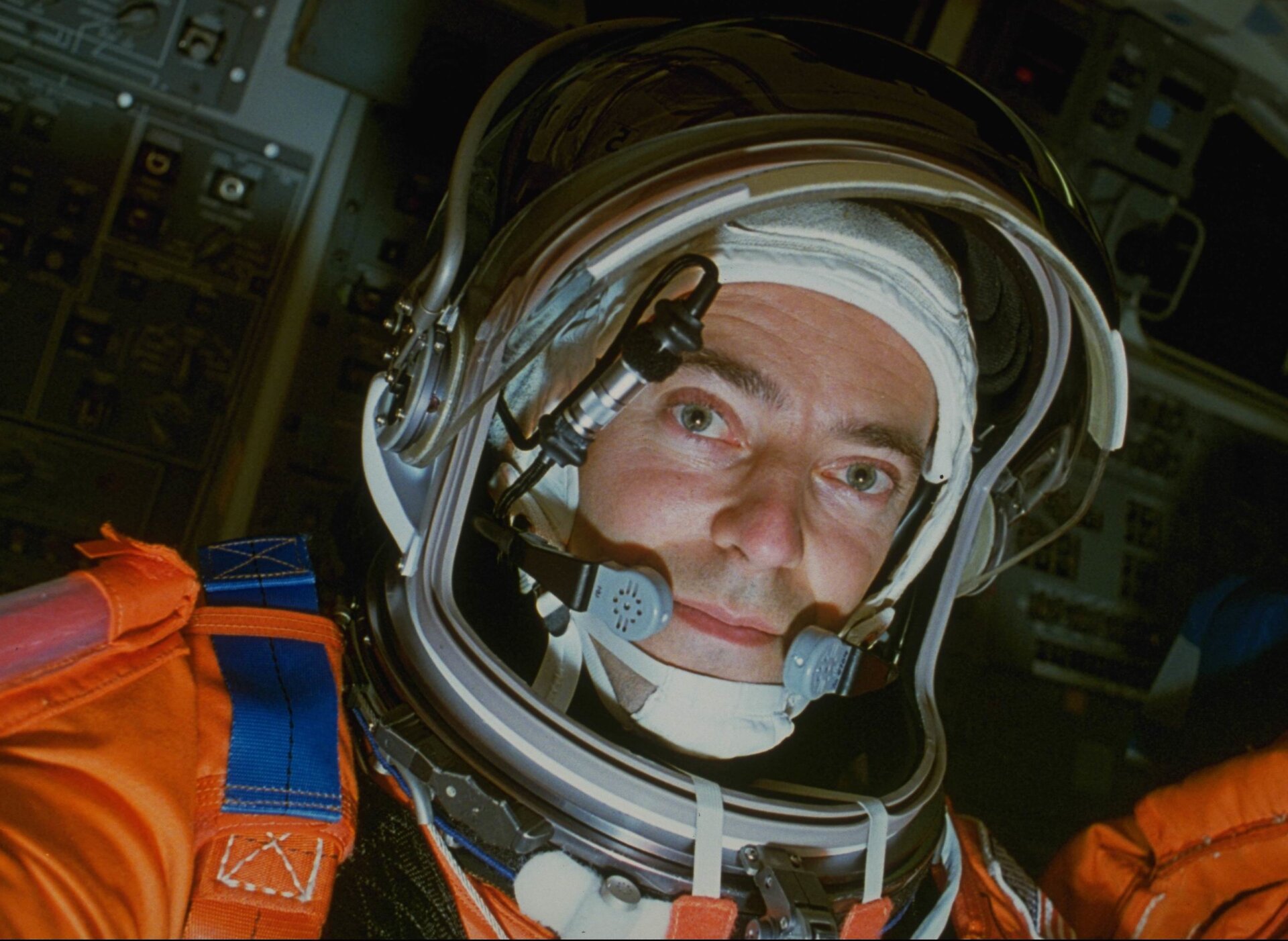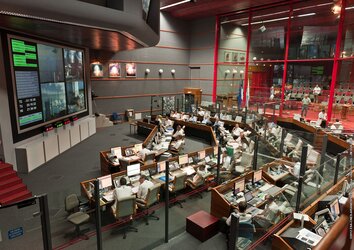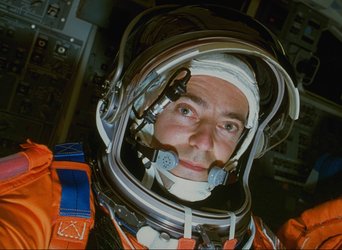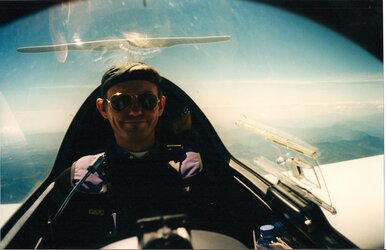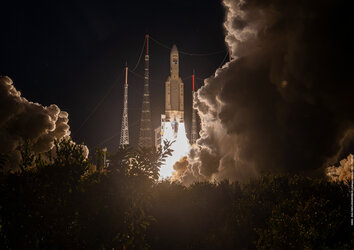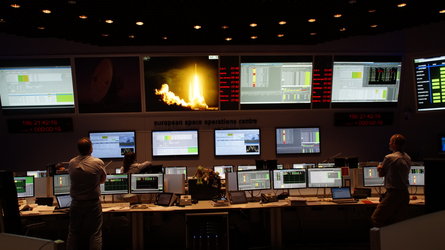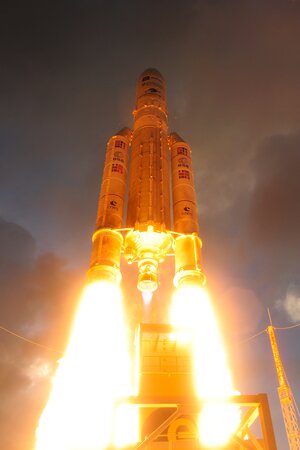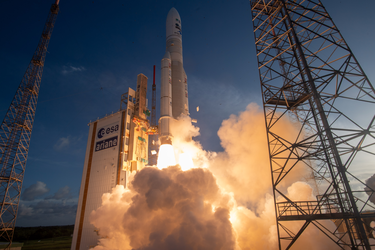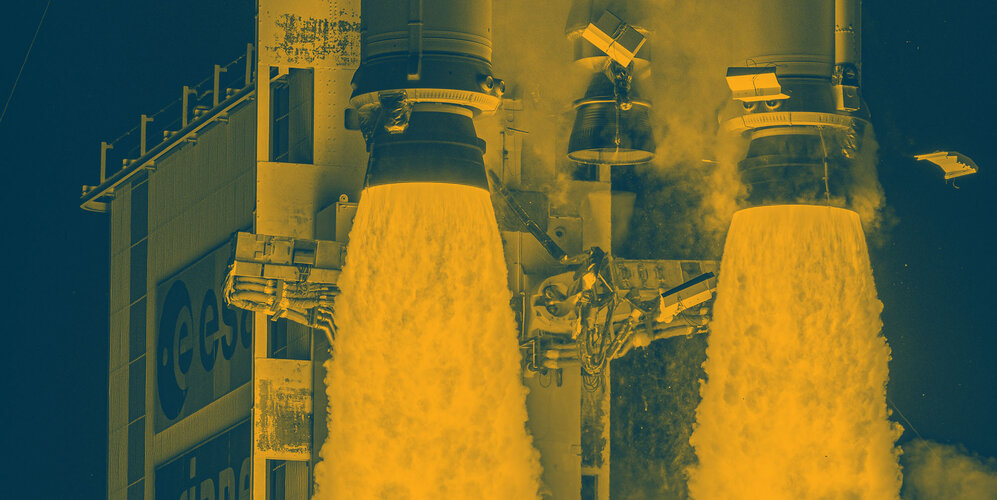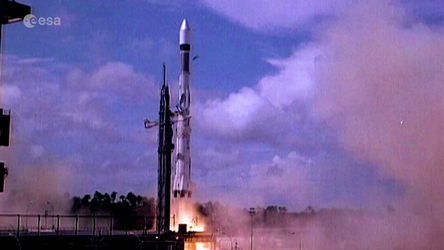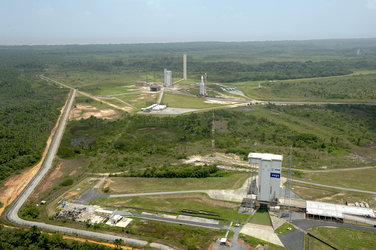Portraits of Ariane 5: No.3, Jean-François Clervoy
The Ariane 5 launcher said a graceful goodbye in July after nearly three decades of loyal service. Many people contributed to its success over the years and, in this series of conversations, some have shared their personal and professional experiences with Annia Domènech.
For the third in the series, we talked with Jean-François Clervoy, ESA astronaut and Air Zero G founder.
"I started working in 1983 in the French space agency CNES, I was part of the second group of French astronauts. Two years after, I had my first encounter with Ariane 5 when I was involved in the Hermes spaceplane programme, a ‘shuttle’ to launch humans into space.
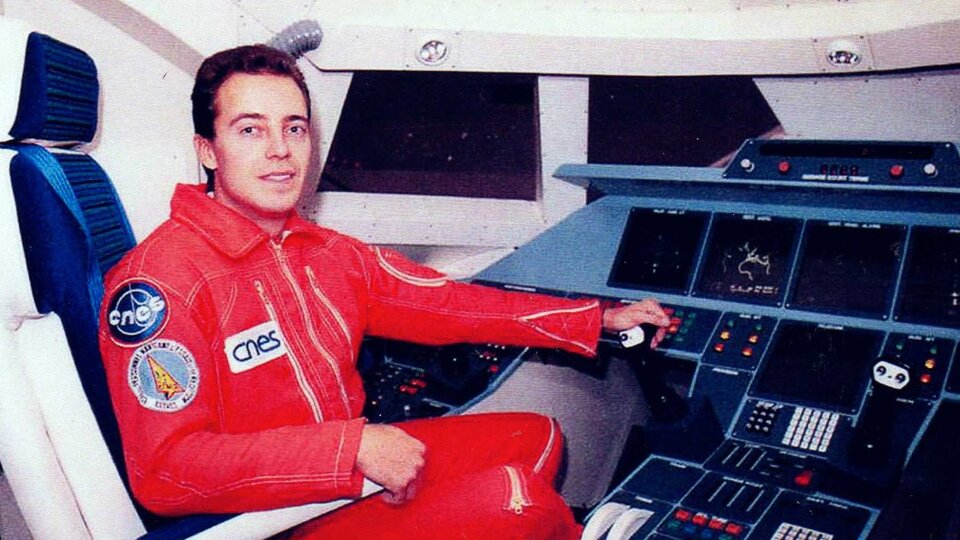
“Hermes was part of the huge European package for the future of space exploration. In this package there were three big blocks: the Hermes spaceplane, the Ariane 5 launcher and the International Space Station’s Columbus module.
“I remember that Jean-Loup Chrétien, the first French astronaut, during the selection of future astronauts by CNES asked what I thought about the idea of launching the Hermes mission on the first Ariane 5 flight in an unmanned configuration. As an astronautical engineer, I answered that there was good progress in automation – autopilots were widely used on aviation – but that having people on board increases the probability of saving different situations. I think he liked my answer.
“Ariane 5 was initially designed both for human spaceflight and commercial flight. It was probably our best chance to have our own European way to transport humans to space. Unfortunately, it never flew in this configuration.
“A few years later, I was assigned to the second group of European astronauts and ESA seconded me right away to NASA, where I integrated the 14th group of NASA astronauts. I was stationed at the Johnson Spaceflight Centre in Houston. I was a flight test engineer on the Space Shuttle system, which is comparable to Ariane 5 but with one basic difference: one has wings to be able to land and fly again. Although the solid rocket boosters of Ariane 5 were initially planned to be recovered and reused, it was never done, I guess it was an economic decision.
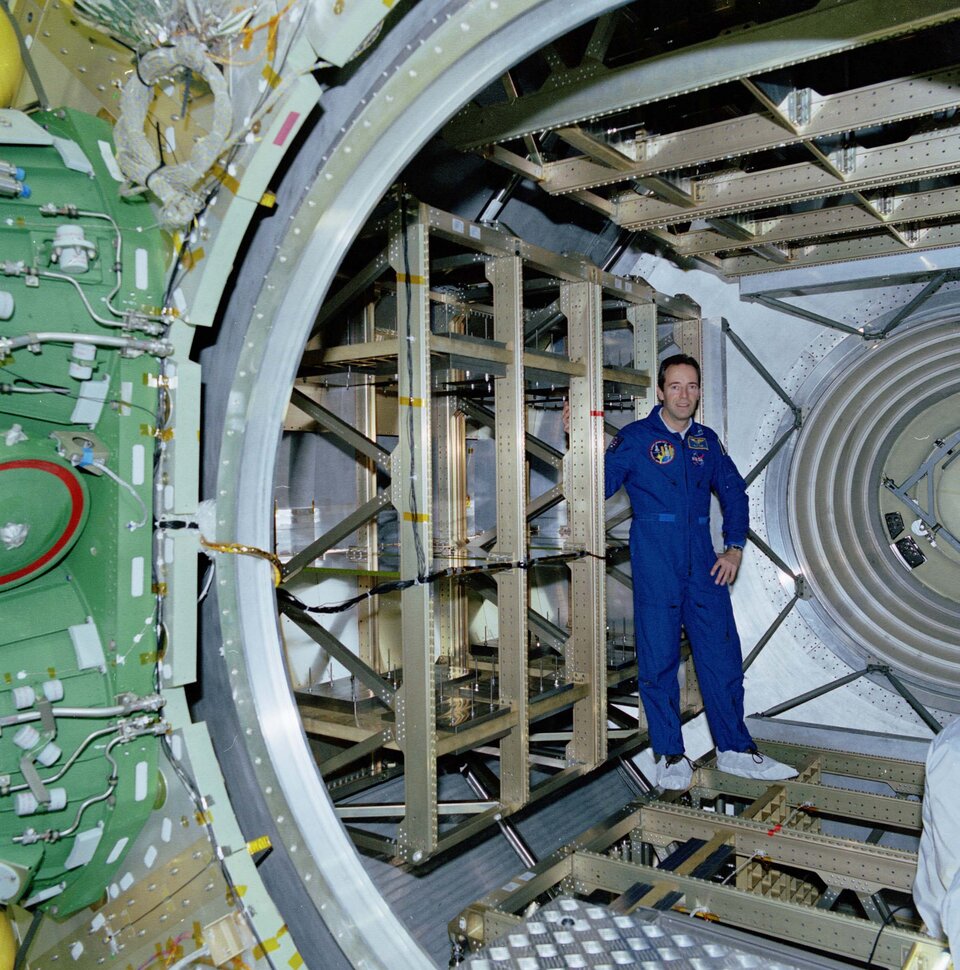
“My second experience with Ariane took place in 1996, when I watched its inaugural launch live on the NASA TV channel. It was my first time seeing the destruction of a rocket in real time, it was very sad. There had of course been launcher losses before. In 1986, I was in a meeting when I received the news about the explosion of the Shuttle Challenger.
“Rocket science is more demanding in terms of excellence and perfection than building a satellite, which is easier to design, test and qualify for flight. There is an incredible amount of energy put in place for the launch of a rocket. Controlling that enormous power is what makes spaceflight risky for both automated and human spaceflight.
“There is a motto one reads on T-shirts that says: ‘I am not a rocket scientist’, meaning ‘I am not a genius’. So, rocket scientists are supposed to be geniuses. As an engineer specialised in satellites in orbit and altitude control systems in human spaceflight, I do not consider myself a ‘rocket scientist’ at all.
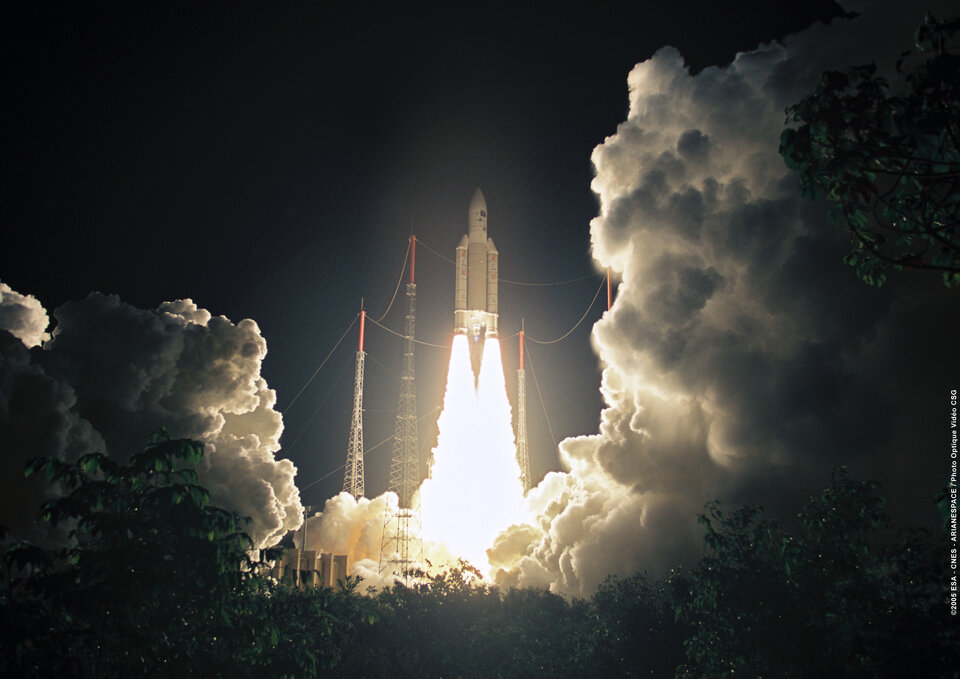
"My third Ariane 5 experience took place when I was involved in a programme to observe the behaviour of Ariane 5 during its end of mission with the ‘zero-g’ aircraft of Novespace. The objective was to improve the theoretical calculation of the debris footprint on Earth.
"It is important that it is not oversized since the trajectory of the rocket will be modified to avoid any falls on inhabited zones.
“Novespace, a subsidiary of CNES, has been mandated three times by CNES and ESA to observe, using the zero-g plane, the break-up of the cryogenic main stage as it reenters the atmosphere. The altitude at which this happens defines the footprint of the debris.
"The conclusion of the three missions (I was only involved in the third, V169), was that the breakup takes place at a lower altitude and generates a smaller footprint than previously thought.
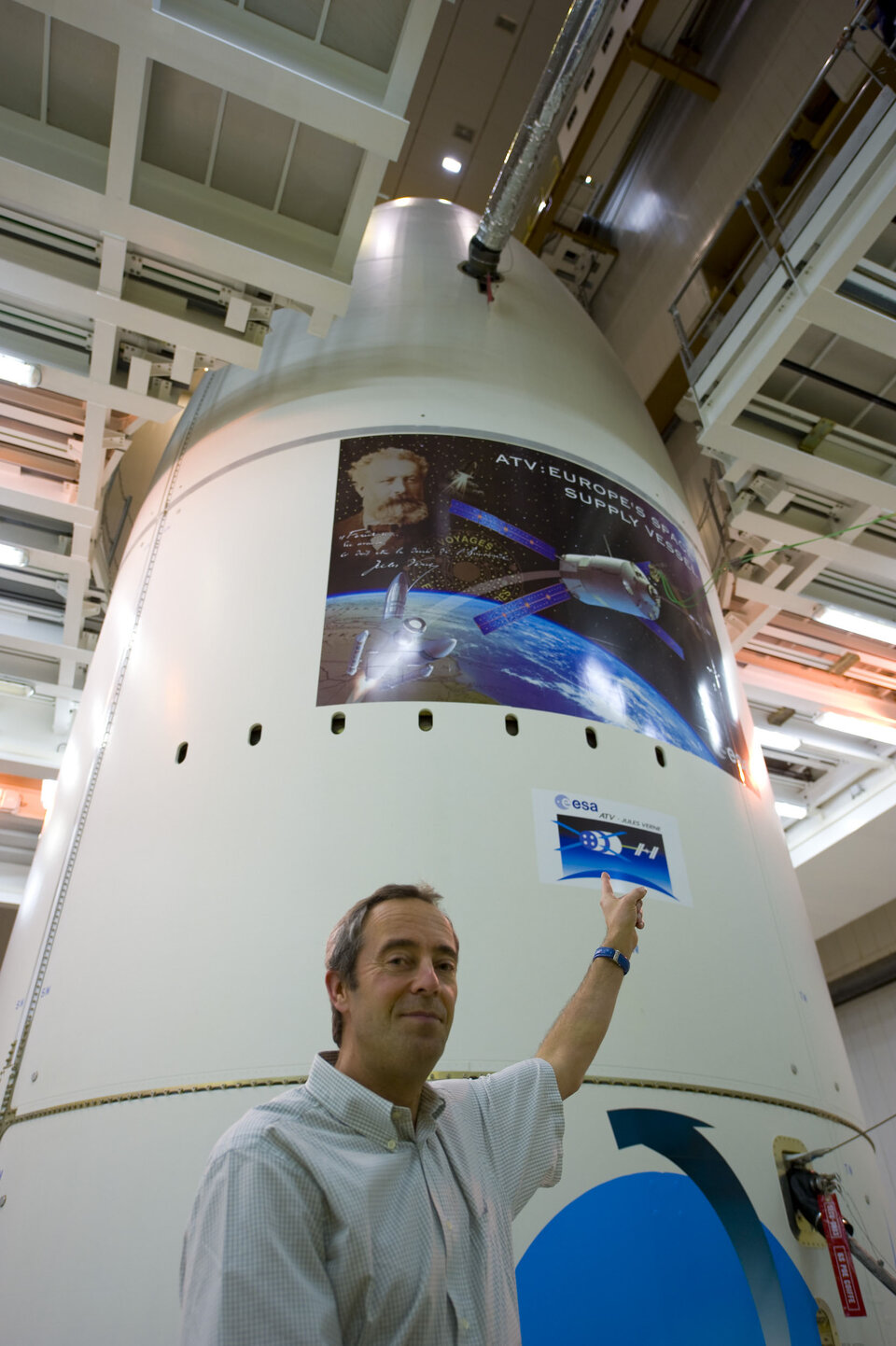
“My last experience with Ariane 5 took place when I was named Senior Advisor Astronaut for ESA’s Automated Transfer Vehicle (ATV), which was critical to resupply astronauts on board the International Space Station with food, clothing and spare parts, etc. We had to decide which type of Ariane 5 upper stage should be used, knowing that it would require re-ignition for the launch of the ATV.
"I attended two ATV launches with an Ariane 5 from Kourou: ATV Jules Verne in 2008 and ATV Johannes Kepler in 2011. Ariane 5 was spectacular. Together with the Space Shuttle it was the only rocket at that time with huge solid rocket boosters that created an extremely bright long plume at launch. The launch of a rocket is beautiful but when you have solid boosters involved it is brighter, louder and conveys a great sense of power. It is incredible. And Ariane 5 delivered that emotion and that sensation.
“I saw this rocket once as one that would potentially launch me. It never happened, but Ariane 5 did a good job overall and did serve the human spaceflight programme by launching the ATVs. It made, I hope, Europeans proud.”
Ariane 5 had 117 successful launches and placed 239 satellites in orbit. The heavy launcher carried prominent payloads, such as ESA’s comet-chasing Rosetta mission, a dozen Galileo navigation satellites, the James Webb Space Telescope and recently Juice, the explorer of Jupiter and its icy moons.


